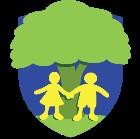

Scholes Junior and Infant School
History Disciplinary Knowledge Progression
Theme: Chronological Understanding
Reception Sequence events or objects in chronological order.
Sequence events in their life
Year 1
Sequence 3 or 4 artefacts from distinctly different periods of time Match objects to people of different ages
Sequence artefacts closer together in time – check with reference book
Sequence photographs etc. from different periods of their life
Year 2
Year 3
Year 4
Describe memories of key events in lives
Place the time studied on a timeline
Use dates and terms related to the study unit and passing of time
Sequence several events or artefacts
Place events from period studied on timeline
Use terms related to the period and begin to date events
Understand and use more complex terms
Know and sequence key events of time studied
Use relevant terms and period labels
Year 5
Year 6
Make comparisons between different times in the past
Place current study on timeline in relation to other studies
Use relevant dates and terms
Sequence up to 10 events on a timeline
Theme: Range and Depth of Historical Knowledge
Reception
Year 1
Year 2
Begin to describe similarities and differences in artefacts
Recognise the difference between past and present in their own and others’ lives
They know and recount episodes from stories about the past
Recognise why people did things, why events happened and what happened as a result
Identify differences between ways of life at different times
Find out about everyday lives of people in time studied
Compare with our life today
Year 3
Identify reasons for and results of people’s actions
Understand why people may have wanted to do something
Use evidence to reconstruct life in time studied
Identify key features and events of time studied
Year 4
Look for links and effects in time studied
Offer a reasonable explanation for some events
Study different aspects of different people – differences between men and women
Examine causes and results of great events and the impact on people
Year 5
Compare life in early and late ‘times’ studied
Compare an aspect of lie with the same aspect in another period
Find out about beliefs, behaviour and characteristics of people, recognising that not everyone shares the same views and feelings
Compare beliefs and behaviour with another time studied
Year 6
Write another explanation of a past event in terms of cause and effect using evidence to support and illustrate their explanation
Know key dates, characters and events of time studied.
Theme: Interpretation of History
Reception
Year 1
Engage in discussion about the past, using pictures, stories, people and artefact
Use stories to encourage children to distinguish between fact and fiction
Compare adults talking about the past – how reliable are their memories?
Compare 2 versions of a past event
Year 2
Year 3
Compare pictures or photographs of people or events in the past
Discuss reliability of photos/ accounts/stories
Identify and give reasons for different ways in which the past is represented
Distinguish between different sources – compare different versions of the same story
Look at representations of the period – museum, cartoons etc
Look at the evidence available
Begin to evaluate the usefulness of different sources
Year 4
Year 5
Year 6
Use textbooks and historical knowledge
Compare accounts of events from different sources – fact or fiction
Offer some reasons for different versions of events
Link sources and work out how conclusions were arrived at
Consider ways of checking the accuracy of interpretations – fact or fiction and opinion
Be aware that different evidence will lead to different conclusions
Confidently use the library and internet for research
Theme: Historical Enquiry
Reception
Year 1
Year 2
Begin to ask and answer questions about the past from a range of sources.
Find answers to simple questions about the past from sources of information e.g. artefacts,
Use a source – observe or handle sources to answer questions about the past on the basis of simple observations.
Use a range of sources to find out about a period
Observe small details – artefacts, pictures
Year 3
Select and record information relevant to the study
Begin to use the library and internet for research
Use evidence to build up a picture of a past event
Choose relevant material to present a picture of one aspect of life in time past
Year 4
Ask a variety of questions
Use the library and internet for research
Begin to identify primary and secondary sources
Use evidence to build up a picture of a past event
Year 5
Select relevant sections of information
Use the library and internet for research with increasing confidence
Recognise primary and secondary sources
Use a range of sources to find out about an aspect of time past
Year 6
Suggest omissions and the means of finding out
Bring knowledge gathered from several sources together in a fluent account
Theme: Organisation and communication
Communicate their knowledge through:
Discussion....
Reception
Year 1
Year 2
Year 3
Year 4
Year 5
Drawing pictures...
Communicate their knowledge through:
Discussion....
Drawing pictures...
Drama/role play..
Making models.....
Writing..
Using ICT...
Recall, select and organise historical information
Communicate their knowledge and understanding.
Select and organise information to produce structured work, making appropriate use of dates and terms. Year 6
